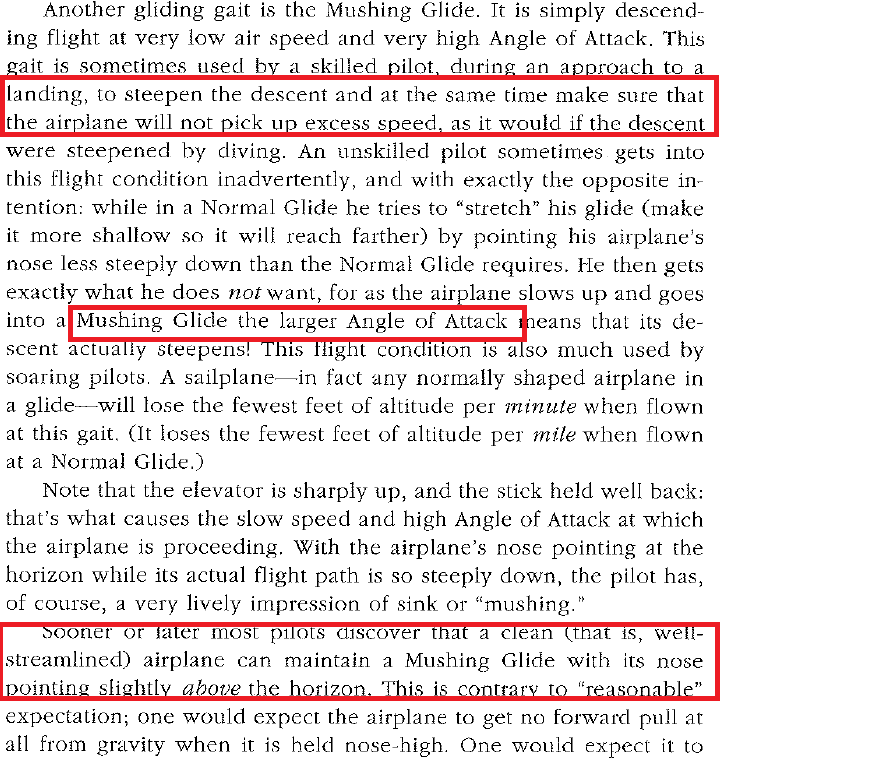It is called "mushing" probably because the controls will be a little mushy (soft). At high angles of attack you begin to lose control authority and the controls can feel soft.
The nose will be pointed slightly above horizon.
When you pull back on the stick your forward velocity will decrease, but your rate of vertical descent will stay the same or decrease by only a small amount, so your angle of descent will become more steep.
Let's put some numbers on this and make a "real" example. Let's imagine you are in a sailplane which is in a configuration that stalls around 35 mph. You are currently travelling at 45 mph in a level flight attitude, descending at 150 feet per minute. You will be on 2-degree glide slope (confirm this for yourself). Ok, now pull back on the stick until you are going about 37 mph. At this point the controls will start to get soft. Your vertical speed may decrease to about 140 feet per minute. Your glide slope will increase to 2.5-degrees. Thus by this maneuver your glide slope increases (becomes more steep).
Just as a further exercise, let's compute how much we can change our touchdown point by the above maneuver. Suppose we are at 200 feet AGL, then we will touchdown in about 5200 feet in the beginning attitude (confirm this for yourself). Okay, now we pull back the stick to 37 mph ("mushing" descent to use Langewiesche's terminology) and our vertical speed goes to -140 FPM. How much does this change our touchdown point?
If you do the math, you will find our touchdown point changes from 5200 feet to 4650, a difference of over 600 feet. So, by using a "mushing" glide we have changed our touchdown point significantly. Let's just illustrate it with a real airfield:

So, here we see our current position at the circle. If we continue on our current glide path we touch down in 5200. It's too close to the crossover on the runway. We would much rather land at the blue line. By using a mushing glide we could accomplish that.




seems that low AOA (pointing slightly above horizon)AoA is relative to the airstream, not the horizon. $\endgroup$